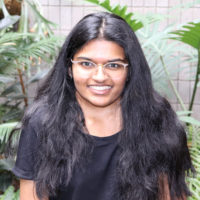
“Recombination Hotspots and their Impact on Maize Genome Structure”
Project Summary:
This study focuses on recombination; specifically, it aims to discover and understand crossover (CO) hotspots’ locations and prevalence along chromosomes in maize. It was divided into a computational component to find CO hotspots and a wet lab component to understand the impact of chromosome arm inversion on CO locations.
The food system that sustains the majority of the human population is at risk of shutting down due to climate change, and increasing the genetic diversity of crop varieties is one means of countering these threats. Genetic diversity is generated through recombination, a process by which genetic material is exchanged between chromosomes or regions of a single chromosome in events known as crossovers (COs). However, efforts of plant breeders to generate diversity are limited by CO numbers, which occur at varying frequencies along chromosomes and are biased towards the subtelomeric regions. Understanding the factors controlling recombination will give breeders the power to expand genetic diversity and create more climate-resilient crop varieties. The first project in this study used a computational approach to locate CO hotspots in the maize genome, which are small regions on a chromosome where crossover events occur at a high frequency. We hypothesized that hotspots occur at haplotype block boundaries in the maize genome, and to investigate the first hypothesis, we used Anchorwave and minimap2 in Linux to complete a pairwise sequence alignment of B73 to all 25 NAM parents and Pafr and ggplot2 in R to generate coverage plots of alignments and bar plots of hotspot distribution, respectively. The second project studies CO hotspot distribution along an inverted chromosome arm, which we hypothesized would be inverted as well. To explore this, we used an immuno-FiSH procedure to visualize proteins involved in COs, MLH3-C and MLH3-N and fluoresce the chromosome with inverted arms.
My Experience:
This position gave me a lot of firsts; it was the first time I ever set foot in a lab, worked full-time, or studied corn in-depth. I have never been so immersed in an educational experience as I was this summer and it has proved to be a huge milestone in my scientific career. My mentor, Ruth, helped me choose captivating projects that accommodated my diverse interests ranging from computational to wet lab work. I got to code in new languages, work with top-of-the-line microscopes, and use complex techniques I had never even heard of before this internship. The best part was working alongside amazing scientists and people that I will remember for the rest of my life. Overall, it was incredible, and I would encourage anyone to experience this in a heartbeat.
